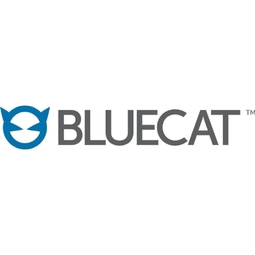
Technology Category
- Infrastructure as a Service (IaaS) - Cloud Computing
- Networks & Connectivity - Gateways
Applicable Industries
- Cement
- Healthcare & Hospitals
Use Cases
- Leasing Finance Automation
- Material Handling Automation
About The Customer
The customer in this case study is a large healthcare network, comprising 129,000 individuals. The network's IT team is relatively small, given the size of the organization, and was initially relying on Powershell scripts to manage their DNS, DHCP, and IP address management (DDI) services. The team recognized the value of automation but was struggling with scalability issues as their project grew. They sought a solution that would allow them to maintain control over their DDI services while also enabling them to scale their automation initiatives.
The Challenge
The healthcare network, a 129,000-person organization, was facing a significant challenge in scaling their automation initiatives. The network's small team of professionals was struggling to maintain control over their DNS, DHCP, and IP address management (DDI) services. They were using Powershell scripts to interface with BlueCat’s API, which initially proved the value of automating DDI services. However, as the project grew, the team began to encounter scalability issues. The team was concerned about the execution of code in multiple places and the need to establish some order to manage the growing complexity.
The Solution
The healthcare network turned to BlueCat’s Gateway network automation platform to build scalable, fully supported automations. One of the key solutions was a zero-touch server build process that covered everything from server build to decommissioning. The automation process allowed users to make selections in a self-service format through ServiceNow, providing inputs about the new server’s location and purpose. Gateway then interfaced with VMware’s vRealize Orchestrator (vRO) to create the prefix for the host. Based on the user’s selections, a backend algorithm created the middle of the host. The suffix was a three- or four-digit number. Once provided with the hostname, the user could boot up the server, obtain the next available MAC address and IP address from BlueCat, and then go back to ServiceNow to close the request.
Operational Impact
Quantitative Benefit

Case Study missing?
Start adding your own!
Register with your work email and create a new case study profile for your business.
Related Case Studies.

Case Study
System 800xA at Indian Cement Plants
Chettinad Cement recognized that further efficiencies could be achieved in its cement manufacturing process. It looked to investing in comprehensive operational and control technologies to manage and derive productivity and energy efficiency gains from the assets on Line 2, their second plant in India.

Case Study
Hospital Inventory Management
The hospital supply chain team is responsible for ensuring that the right medical supplies are readily available to clinicians when and where needed, and to do so in the most efficient manner possible. However, many of the systems and processes in use at the cancer center for supply chain management were not best suited to support these goals. Barcoding technology, a commonly used method for inventory management of medical supplies, is labor intensive, time consuming, does not provide real-time visibility into inventory levels and can be prone to error. Consequently, the lack of accurate and real-time visibility into inventory levels across multiple supply rooms in multiple hospital facilities creates additional inefficiency in the system causing over-ordering, hoarding, and wasted supplies. Other sources of waste and cost were also identified as candidates for improvement. Existing systems and processes did not provide adequate security for high-cost inventory within the hospital, which was another driver of cost. A lack of visibility into expiration dates for supplies resulted in supplies being wasted due to past expiry dates. Storage of supplies was also a key consideration given the location of the cancer center’s facilities in a dense urban setting, where space is always at a premium. In order to address the challenges outlined above, the hospital sought a solution that would provide real-time inventory information with high levels of accuracy, reduce the level of manual effort required and enable data driven decision making to ensure that the right supplies were readily available to clinicians in the right location at the right time.

Case Study
Gas Pipeline Monitoring System for Hospitals
This system integrator focuses on providing centralized gas pipeline monitoring systems for hospitals. The service they provide makes it possible for hospitals to reduce both maintenance and labor costs. Since hospitals may not have an existing network suitable for this type of system, GPRS communication provides an easy and ready-to-use solution for remote, distributed monitoring systems System Requirements - GPRS communication - Seamless connection with SCADA software - Simple, front-end control capability - Expandable I/O channels - Combine AI, DI, and DO channels

Case Study
Driving Digital Transformations for Vitro Diagnostic Medical Devices
Diagnostic devices play a vital role in helping to improve healthcare delivery. In fact, an estimated 60 percent of the world’s medical decisions are made with support from in vitrodiagnostics (IVD) solutions, such as those provided by Roche Diagnostics, an industry leader. As the demand for medical diagnostic services grows rapidly in hospitals and clinics across China, so does the market for IVD solutions. In addition, the typically high cost of these diagnostic devices means that comprehensive post-sales services are needed. Wanteed to improve three portions of thr IVD:1. Remotely monitor and manage IVD devices as fixed assets.2. Optimizing device availability with predictive maintenance.3. Recommending the best IVD solution for a customer’s needs.

Case Study
HaemoCloud Global Blood Management System
1) Deliver a connected digital product system to protect and increase the differentiated value of Haemonetics blood and plasma solutions. 2) Improve patient outcomes by increasing the efficiency of blood supply flows. 3) Navigate and satisfy a complex web of global regulatory compliance requirements. 4) Reduce costly and labor-intensive maintenance procedures.




